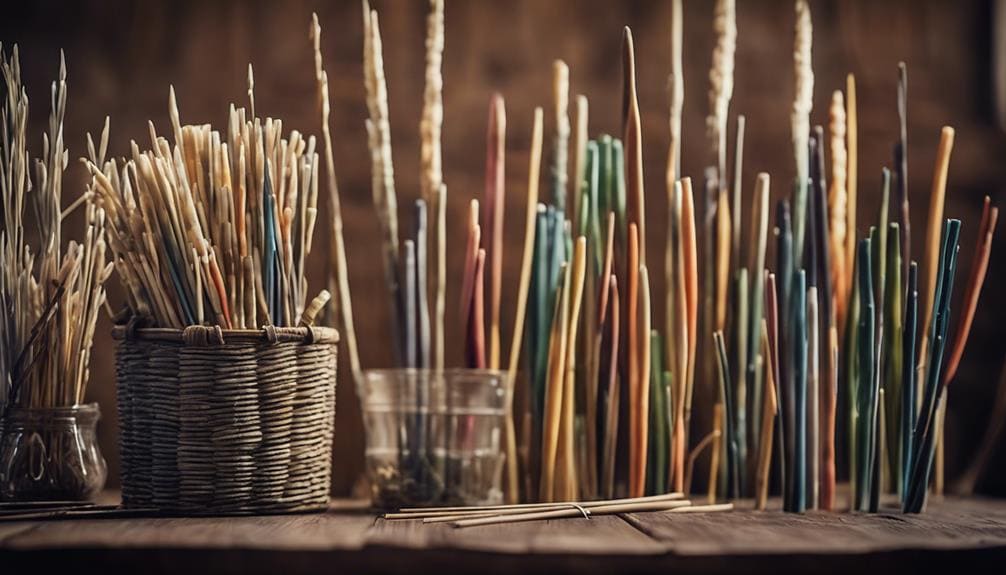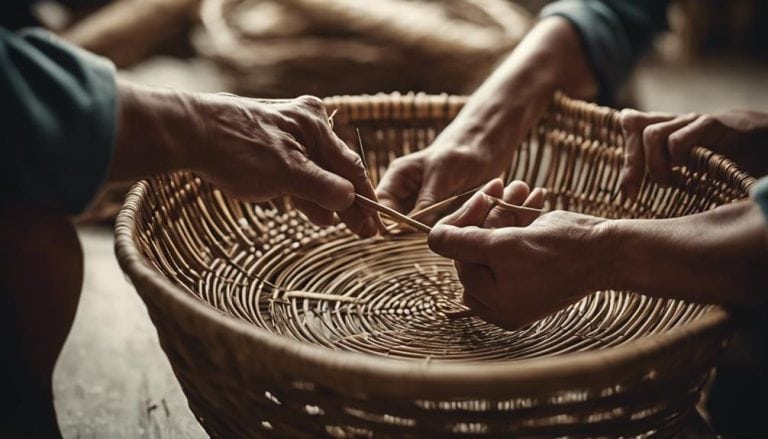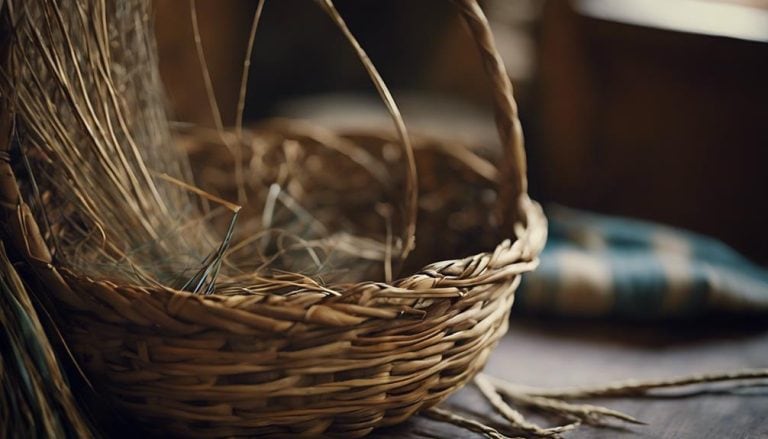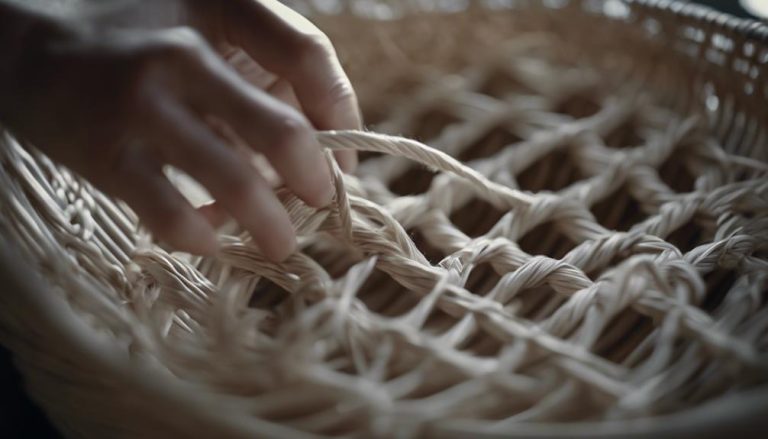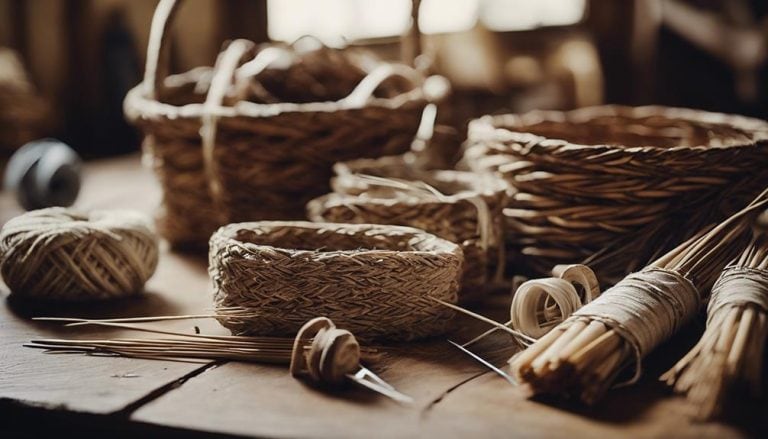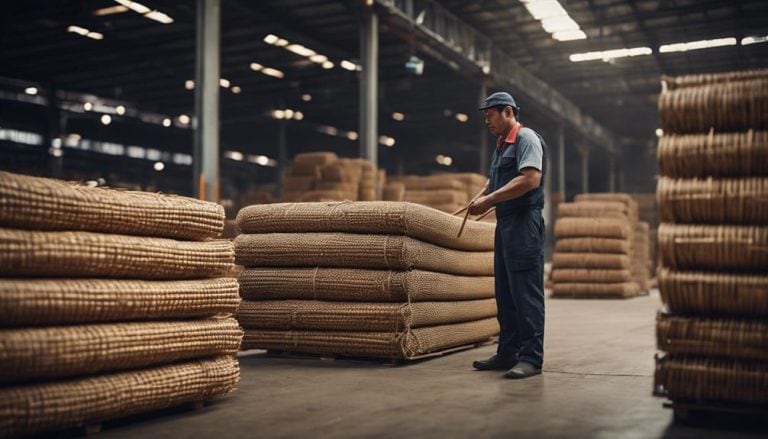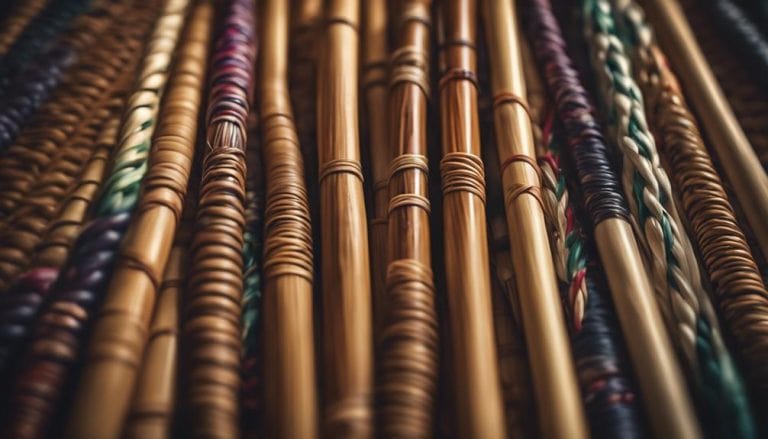Choosing Rush Reeds for Basket Weaving
I stumbled upon a patch of rush reeds while exploring the countryside. Selecting the right rush reeds for basket weaving can be intriguing and rewarding. As I carefully examine each rush, considering factors like texture, flexibility, and color, I feel pride in creating something functional yet beautiful. Stay tuned to discover the intricate details of choosing rush reeds to elevate your basket-weaving projects to new heights.
When choosing rush reeds for basket weaving, consider their flexibility and strength. These qualities will determine the durability and appearance of the final product, making them essential for a successful outcome.
Key Takeaways
- Select rush reeds based on weaving intricacy and sustainability.
- Consider color, texture, and length for the desired basket style.
- Source long, straight, and undamaged reeds for quality weaving.
- Store rush reeds vertically in a cool, dry place to maintain their condition.
Types of Rush Reeds
Soft rush and bullrush are two common rush reeds utilized in basket weaving due to their distinct characteristics and versatility. Soft rush, scientifically known as Juncus effusus, boasts smooth, cylindrical stems and is prevalent in wetland habitats.
On the other hand, bullrush, also called cattail and belonging to the Schoenoplectus genus, features long, flat leaves that render it flexible for weaving techniques and creative designs. These rush reeds are favored for their pliability, strength, and natural beauty, making them ideal materials for crafting baskets with intricate patterns.
When considering rush reeds for weaving, factors such as length, thickness, and color variations play crucial roles in achieving the final product’s desired aesthetic and structural qualities. Moreover, sustainability concerns and environmental impact are vital, ensuring a thoughtful approach to utilizing rush reeds in basket weaving practices.
Factors to Consider
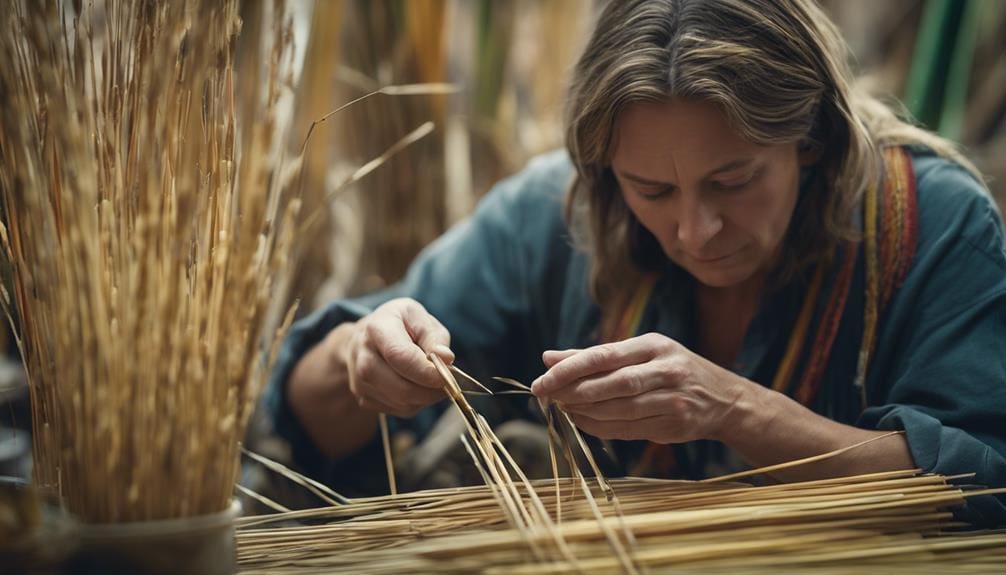
When considering rush reeds for basket weaving, evaluating factors such as length, thickness, and a soft foam-like center is crucial to ensure optimal flexibility and quality in the final crafted products.
- Weaving Techniques and Creative Designs: Select rush reeds that match the intricacy of your weaving patterns. The reeds should be long and thin for detailed weaving styles.
- Sustainability and Eco-Friendly Alternatives: Opt for rush reeds harvested using sustainable practices. Look for eco-friendly alternatives that promote environmental conservation.
- Quality Assurance: Inspect rush reeds for any discoloration or signs of damage. Choosing reeds free from defects ensures your finished baskets’ durability and overall quality.
- Harvesting Season: Consider harvesting rush reeds in late summer or early fall for the best results. Reeds harvested during this season offer optimal flexibility and strength, making them ideal for basket-weaving projects.
Color and Texture Options
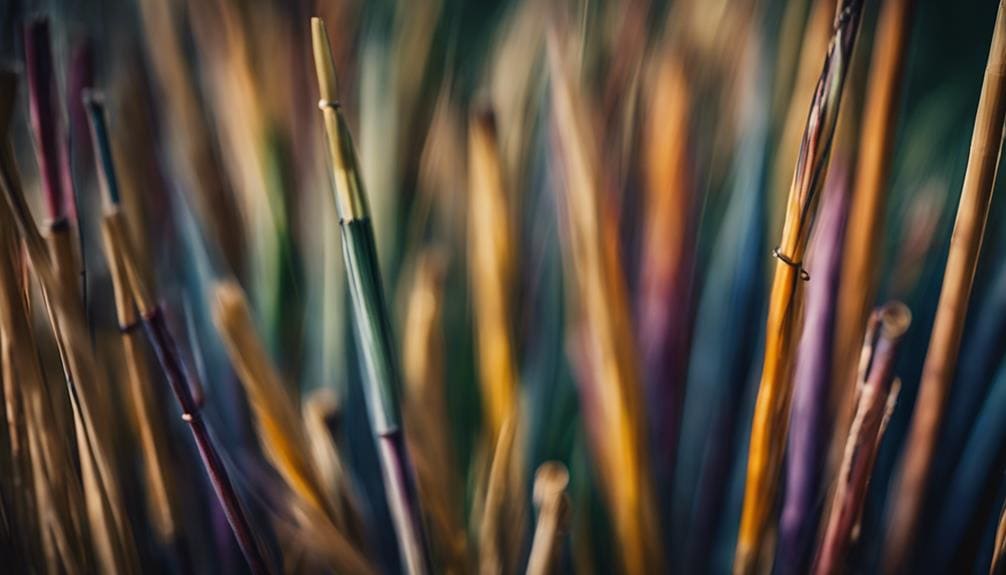
Considering the color and texture options of rush reeds for basket weaving is essential for achieving the desired visual and tactile outcomes in the final woven products. Rush reeds come in various colors, including green, brown, and golden hues, offering a range of choices to enhance the visual appeal of baskets.
These colors play a crucial role in determining the overall look of the basket, with lighter shades creating a delicate appearance and darker tones adding depth and richness to the design. Additionally, the texture of rush reeds can vary from smooth and fine to rough and coarse, influencing the tactile experience of the woven baskets.
By mixing different textures in a basket, weavers can create creative patterns and visual contrasts that elevate the aesthetic appeal of the final product. When selecting rush reeds, it is important to consider the intended use and style of the basket, as color combinations and weaving techniques can impact both the look and durability of the woven piece.
Sourcing High-Quality Reeds
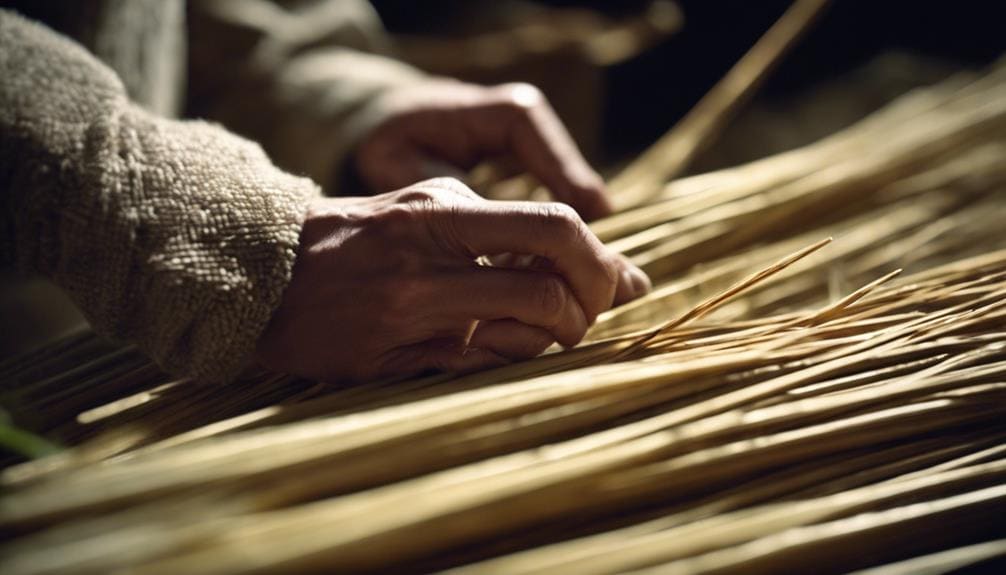
To ensure the quality and usability of rush reeds for basket weaving, it is essential to select reeds that exhibit a soft and flexible texture carefully, are long and straight for ease of handling, and possess uniform thickness to maintain structural consistency in the final woven products. When sourcing high-quality reeds for basket weaving, consider the following:
- Texture: Look for rushes with a soft and pliable texture, ideal for intricate weaving techniques that require flexibility and ease of manipulation.
- Length and Straightness: Choose long and straight reeds to simplify the weaving process, allowing for smoother and more uniform incorporation into the basket design.
- Thickness: Opt for rushes with a consistent thickness throughout their length to ensure the structural integrity of the woven basket, enhancing its durability and aesthetic appeal.
- Quality Check: Inspect the rushes for any signs of damage, mold, or discoloration, as these can negatively impact the sustainability of the weaving materials and the final product’s quality.
These factors will elevate the weaving experience and honor the cultural significance and historical uses of rush reeds in basketry traditions.
What Are the Best Types of Rush Reeds for Basket Weaving?
Regarding traditional rush reeds basket making, a few types are highly recommended. Common bulrush, river bulrush, and cattail are the best rush reeds for basket weaving due to their flexibility, durability, and ease of use in creating intricate designs.
Tips for Proper Storage
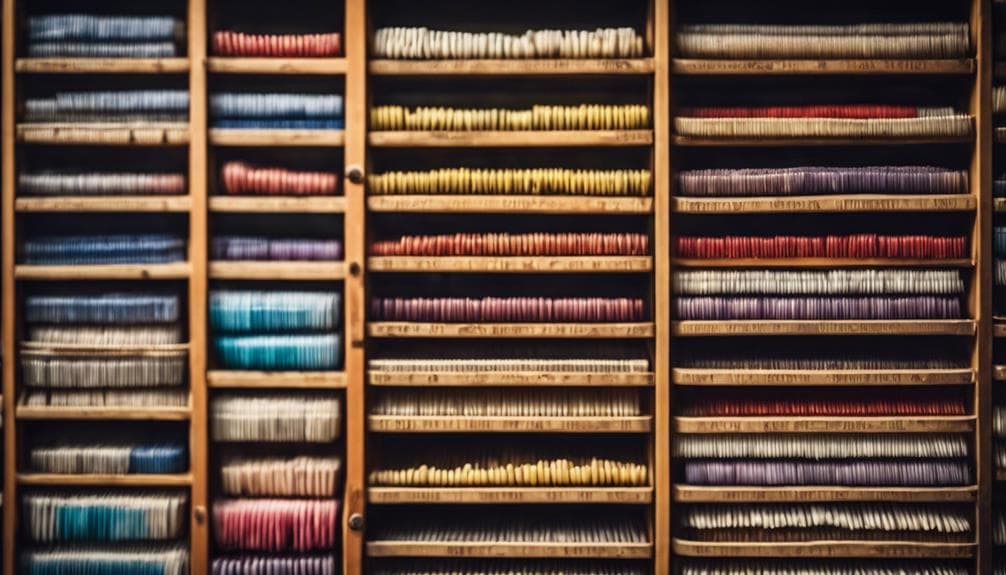
Proper storing of rush reeds is crucial in maintaining their quality and usability for basket weaving. Storing them in a cool, dry environment is essential to preserve rush reeds. This practice helps prevent the growth of mold and mildew, which can compromise the reeds’ integrity. Additionally, keeping rush reeds away from direct sunlight is paramount in maintaining their natural color and strength over time.
When storing rush reeds, placing them in a vertical position is advisable to prevent bending or warping, which could affect their suitability for weaving. Using breathable containers or bags is also recommended to allow proper air circulation and prevent moisture buildup, which can lead to rotting.
Regularly inspecting stored rush reeds for any damage or deterioration is crucial for ensuring their quality. By following these storage solutions and preservation techniques, you can prevent mold, maintain the quality of rush reeds, and ultimately enhance your basket weaving experience.
Frequently Asked Questions
How Do You Harvest Rushes for Weaving?
To harvest rushes for weaving, I cut them at the base with scissors. Long, flexible rushes with a soft foam-like center are best. Harvest in wetlands with bushes, sorted by length and thickness for weaving.
What Are the Best Sticks for Basket Weaving?
Choosing the best sticks for basket weaving involves selecting rush types based on flexibility, thickness, and length. Experimenting with different rushes can enhance weaving techniques, adding visual interest and unique patterns to the finished product.
What Reeds Are Used for Basket Weaving?
I select common and soft rushes for basket weaving. They offer flexibility and uniform thickness, crucial for intricate weaving techniques. Their color range adds visual appeal. I harvest them in late summer for optimal strength.
How Long Does It Take To Soak Reeds For Basket Weaving?
Feeling like a fish out of water, I soaked the reeds for 24 hours, finding the sweet spot for flexibility. Balancing soaking duration is key for mastering weaving techniques. Precision in soaking ensures an easy drying process, enhancing intricate weaving patterns.
Conclusion
In conclusion, selecting rush reeds for basket weaving is like choosing the perfect ingredients for a recipe – each element plays a crucial role in the final product. By carefully considering factors such as rush type, color, and quality, we can ensure that our baskets are sturdy and well-crafted and reflect this traditional craft’s rich cultural and historical significance. Happy weaving!

